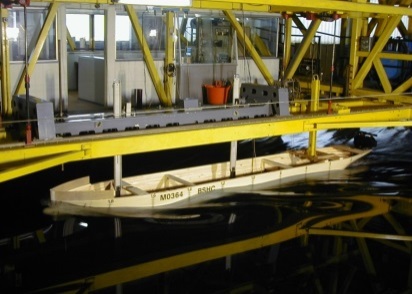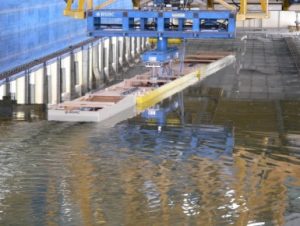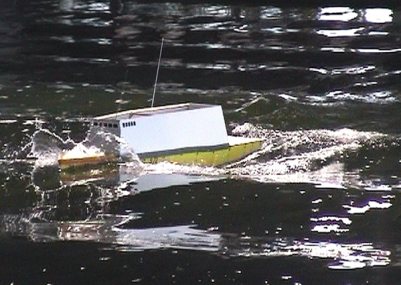Research laboratory for renewable marine energy converters
BSHC Laboratory Complex for Hydrodynamic Research and Model Testing of Ships and Marine Structures consists of:
- deep-water towing tank 200x16x6.5 m, maximum towing speed 6 m / s, possibility to generate waves up to 0.4 m wave height, length of used models up to 12 m
- shallow-water towing tank 200x16x1.5 m
- maneuvering&seagoing basin 60x40x2.5 m, possibility to generate waves up to 0.2 m wave height, length of the used models up to 4 m, autonomous driven, ultrasonic registration of the trajectory
- Cavitation tunnel with changeable working sections:
– Section 1: 2.6×0.6×0.6 m, maximum flow rate 14 m / s
– Section 2: 6.0×1.4×0.7 m, maximum flow rate 5 m / s - wind tunnel with an elliptical cross-section of the work area 0.8×0.8×0.5 m, maximum flow rate 66 m / s



Purpose: Carrying of towing tests and propulsion tests in deep and shallow water, tests of propulsors, maneuvering tests, seakeeping tests, cavitation tests, model tests of renewable energy sources and energy saving devices, aerodynamic tests of ship and other structures, design and production of experimental models of ships, propellers and floating structures, ship theory calculations, marine incident analysis, on-board computer systems, application of computational hydrodynamics (CFD), computer modeling and simulation of marine objects and operations.
Activities planned:
The aim is to expand the capacity of the BSHC and the overall Marine Research Infrastructure to reflect new tendencies in marine science and technology related to ecology, climate change, national industry development and pan-European blue growth.
The newly established laboratory will include two main facilities:
- Wave flume for modeling of objects and processes in the coastal zone, incl. coastal marine energy converters, coastal protection facilities, and more. The channel will have 45×1.5×1.0 m workspace dimensions and will be equipped with wave and current generation systems.
It will be used by designers and owners of energy parks to study the efficiency of marine energy converters (from waves, currents, wind, temperature and salinity gradients as well as hybrid structures) as well as from designers and builders of structural elements of coastguard facilities, boat and yacht harbors and other coastal sites, as well as their impact on the environment. A natural area of application is the training of students and staff working in design organizations and water engineering.
- Large wind tunnel for modeling of general purpose wind turbines and specially designed units for use in urban areas, as well as other engineering facilities subjected to wind effects (ships and drilling platforms, bridges, road facilities, industrial chemistry sites, workshops, residential quarters, etc.). The working section of the tube will be elliptical in size about 3 x 4 m and sub-sound airflow velocities.
It will be widely used both in the training and activities of wind energy specialists, architects and designers of engineering facilities, as well as in the training of personnel for military aviation.

